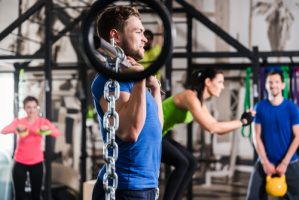Articles
SIRC articles provide evidence-based and actionable insights from sport researchers, athletes, coaches, sport organizations and thought leaders to advance sport in Canada.
Featured Article
Concussions in Sport: What Parents Need to Know About the Youngest Athletes
Each year in Canada, more than 200,000 athletes experience a concussion. The numbers are striking, and so is the fact that until recently, the youngest athletes were almost absent from research and public conversation about these injuries. Dr. Miriam Beauchamp is a professor at the University of Montreal, a researcher at Sainte-Justine Hospital, and Canada…

Search Articles

Athletes are travelling more than ever, flying across the world for competition and training. Even competing in the same country can require travelling through multiple time zones. At a time when athletes want to be in peak form, jet lag...

The Greater Incidence of ACL Injuries in Females: Risk Factors and Prevention
October 4, 2017
| Lily Dong, SIRC
The anterior cruciate ligament (ACL) is one of the ligaments inside the knee joint. Connecting the femur (thigh bone) to the tibia (shinbone), it limits the forward translation of the tibia to prevent it from sliding too far forward, and...

How Can You Adapt Your Exercise Plans to Your Travel?
July 26, 2017
| Lily Dong, SIRC
Be it for business or for pleasure, travelling often shakes up your normal schedule. Meals, sleep, and fitness routines change to accommodate meetings or activities. Travel doesn’t need to set you back from your fitness goals, though. There are several...

HIITing the Gym: The Science of High Intensity Interval Training
May 31, 2017
| Lily Dong, SIRC
Key Points: For sedentary populations, HIIT is the most time efficient – not necessarily the best – training type to increase aerobic and anaerobic capacity Elite athletes can include HIIT training to improve their lactate response and improve performance even...

Static vs Dynamic Stretching
May 3, 2017
|
Warming up is essential for athletic performance, not only does it get the body ready to train or compete, it can improve performance and help prevent injury as well. And one of the essential parts of the warmup is stretching...

Variable resistance training: Adding a link to the chain!
March 15, 2017
|
Strength training has been a staple part of any athlete’s training program for years and there are many variations that can be applied to standard strength training scenarios to capitalize on building strength. Where strength training can sometimes be seen...
Sport Injury – Healing the Mind and Body
March 10, 2017
| SIRC
Most athletes, competitive through recreational, experience injury in their sport at some time. There are many practitioners out there who can help heal the physical symptoms of the injury from the family doctor to the physical therapist. But dealing with the...
“You Are What You Eat” – Fueling up for Competition
March 10, 2017
| SIRC
Knowing what to eat and when to eat for sports can seem like a science. Don’t let all the information out there leave you frazzled and hungry. For the everyday athlete a little preparation can make it very simple! The...
Attention Training in Young Elite Athletes – Highlights from Recent Research
March 10, 2017
| Nancy Rebel, MLIS, SIRC
In the arena of sport psychology, research around attention and its relationship to athletic performance has been around for a number of years. Much of this research has focused on athlete training, and deliberate practice in particular, when it comes...

Preventing infection and maintaining immune function using nutritional strategies
December 13, 2016
| Catherine Naulleau, VIVAÏ Experts en nutrition
It is well documented that moderate exercise prevents many infections and greatly improves immune system function. In contrast, among elite athletes who train at a faster pace and at a higher intensity, the risk of illness increases significantly and the...